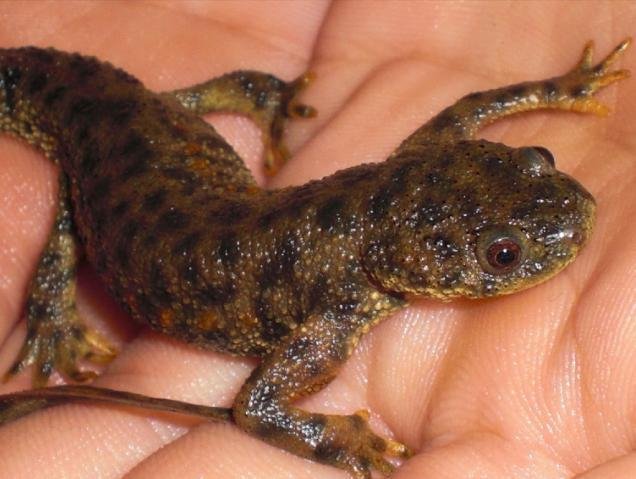Trying to create recovery abilities
The salamander is a master at recreating parts of the body, both lost limbs as well as parts of the heart and brain. András Simon wants to understand how it works. This knowledge could lead to new treatments for everything from wound healing to Parkinson's.

Many animals have impressive regenerative abilities, but among vertebrates, the salamander is in a class of its own. It heals internal and external injuries without scarring, dead brain cells are replaced with new ones and lost limbs grow out again. What if we could learn to mimic this recreation ability! András Simon believes that good conditions exist for this to be possible.
“It is of course far-fetched to propose that an arm can grow out again, but, for example, wounds healing without scars could become a reality soon in the future,” he says.
One of András Simon's key research findings relates to how salamanders with Parkinson-like damage regulate the new formation of the dopamine-producing brain cells that die due to the disease.
“Now we’ll continue and see if we can get mice to provide a similar regenerative response. It must not be absolutely comprehensive to be clinically significant. If you can just replace a few percent of a Parkinson’s patient’s lost cells, it can mean major improvements.”
Become stem cells if necessary
Other, still unpublished findings from Simon's research group involve how specialized cells in the salamander develop "backwards" and become stem cells if necessary.
“We've found that they go through a near-death-experience in order to rejuvenate. By activating the cells’ program for cell death, but then stopping the process at the last moment possible, salamanders create new stem cells. This process is something we have been able to reproduce in vitro with both salamander and mice cells. We have also seen that new stem cells could repair muscle damage in mice. For us, this is a very interesting path which we are continuing to explore,” says András Simon.
Text: Anders Nilsson
First published in Swedish in the booklet Från Cell till Samhälle 2014
More reading
 Photo: Alberto Joven Araus
Photo: Alberto Joven ArausSalamander genome gives clues about unique regenerative ability
Researchers at Karolinska Institutet have managed to sequence the giant genome of a salamander, the Iberian ribbed newt, which is a full six times greater than the human genome. Amongst the early findings is a family of genes that can provide clues to the unique ability of salamanders to rebuild complex tissue, even body parts.
